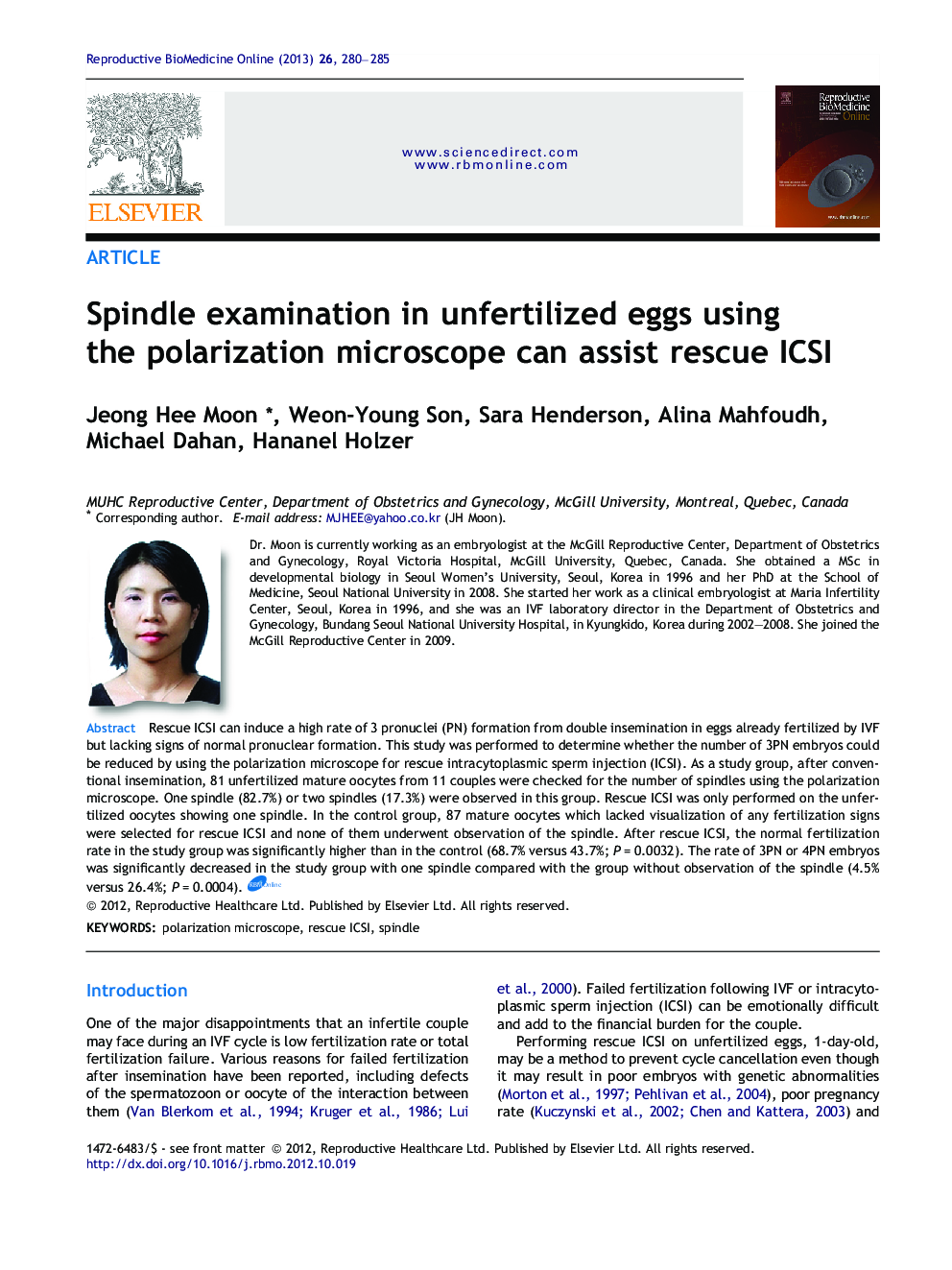| Article ID | Journal | Published Year | Pages | File Type |
|---|---|---|---|---|
| 3970668 | Reproductive BioMedicine Online | 2013 | 6 Pages |
Rescue ICSI can induce a high rate of 3 pronuclei (PN) formation from double insemination in eggs already fertilized by IVF but lacking signs of normal pronuclear formation. This study was performed to determine whether the number of 3PN embryos could be reduced by using the polarization microscope for rescue intracytoplasmic sperm injection (ICSI). As a study group, after conventional insemination, 81 unfertilized mature oocytes from 11 couples were checked for the number of spindles using the polarization microscope. One spindle (82.7%) or two spindles (17.3%) were observed in this group. Rescue ICSI was only performed on the unfertilized oocytes showing one spindle. In the control group, 87 mature oocytes which lacked visualization of any fertilization signs were selected for rescue ICSI and none of them underwent observation of the spindle. After rescue ICSI, the normal fertilization rate in the study group was significantly higher than in the control (68.7% versus 43.7%; P = 0.0032). The rate of 3PN or 4PN embryos was significantly decreased in the study group with one spindle compared with the group without observation of the spindle (4.5% versus 26.4%; P = 0.0004).Rescue intracytoplasmic sperm injection (ICSI) can induce a high rate of 3 pronuclei (PN) formation from double insemination in eggs already fertilized by IVF but lacking signs of normal pronuclear formation. This study was performed to determine whether the number of 3PN embryos could be reduced by using the polarization microscope for rescue ICSI. Ovarian stimulation for IVF used gonadotrophin-releasing hormone agonist or antagonist protocols. Oocytes were collected 35 hours after human chorionic gonadotrophin administration. Three hours after egg retrieval, cumulus–oocyte–complexes were inseminated by conventional insemination. Fertilization was assessed 16–18 hours after insemination. As a study group, 81 unfertilized mature oocytes after conventional insemination from 11 couples were checked for the number of spindles by the polarization microscope; one spindle (82.7%) or two spindles (17.3%) were observed. Rescue ICSI was only performed on the unfertilized oocytes showing one spindle. In the control group, 87 mature oocytes without visualization of any fertilization signs were selected for rescue ICSI and none of their oocytes underwent observation of the spindle. The normal fertilization rate in the study group was significantly higher than in the control group (68.7% versus 43.7%; P = 0.0032). The rate of 3PN or 4PN was significantly lower in the study group with one spindle compared with the control group (4.5% versus 26.4%; P = 0.0004). Rescue ICSI of unfertilized eggs which had one spindle with the polarization microscope resulted in better normal fertilization rate and less 3PN rate compared to the control group.
